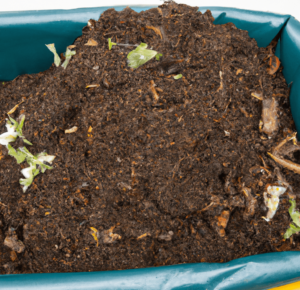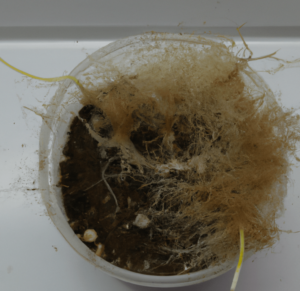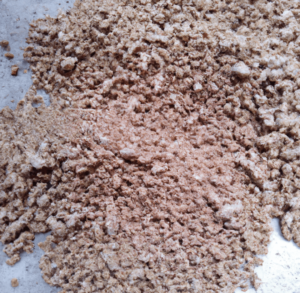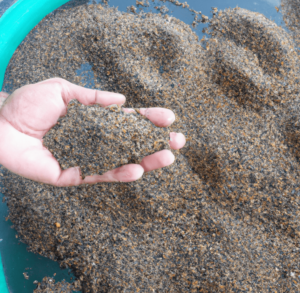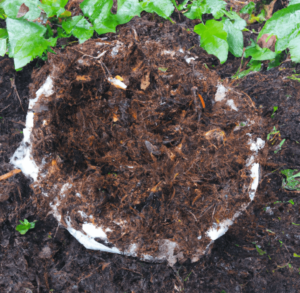The measurement of soil’s acidity or alkalinity by its pH is essential for fertilization and crop growth. It influences the availability of water as well as the solubility of important nutrients like nitrogen, phosphorus, and potassium in the soil. For most crops, the ideal pH range is 6.0 to 7.0, but if the soil pH is too high or low, it can restrict the uptake of nutrients and water, resulting in stunted growth, yellowing leaves, and decreased yields. Farmers and horticulturists can optimize their procedures and increase crop yields by having a better understanding of the importance of soil pH in fertilization.
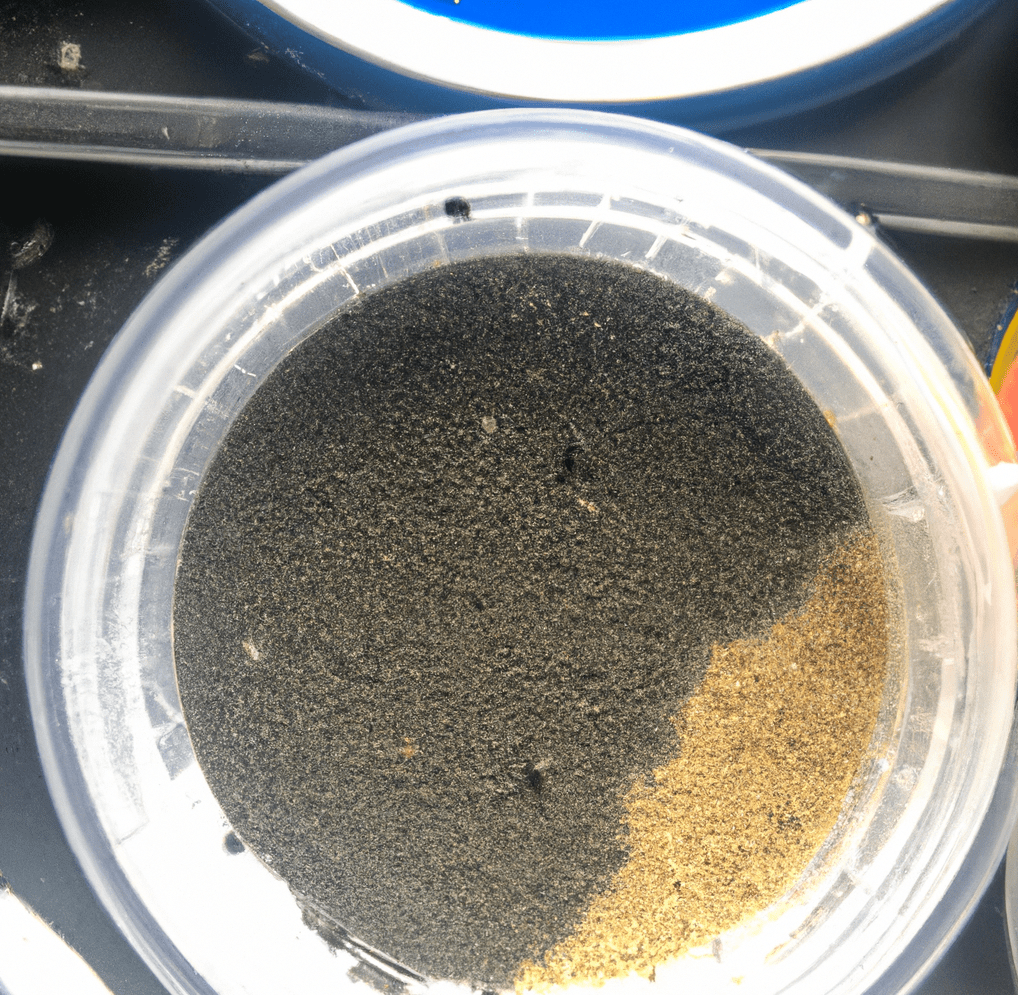
Understanding Soil pH
So, what is the soil pH and what is the importance of soil pH in fertilization? The term “soil pH” refers to a measurement of the soil’s acidity or alkalinity. It has a significant impact on crop development and productivity because it plays a key role in regulating how readily available soil nutrients are to crops.
A pH level of 7.0 is regarded as neutral, with values lower than that being acidic and higher than that being alkaline. The type of parent material, the presence of organic matter like fertilizers, and surface water are only a few examples of variables that might affect the pH level of the soil.
The availability of soil nutrients is also greatly influenced by the pH level, as some nutrients are more easily accessible at different pH levels. For instance, crops often have the best nutrient availability when cultivated in soil that has a pH between 6.0 and 7.0. Understanding the pH level of the soil and modifying it as needed to enable optimal crop growth and nutrient uptake are essential components of proper nutrient management.
This can be done by using sulfur to lower the pH of alkaline soil and liming materials to raise the pH of acidic soil. In order to maintain the ideal pH levels for crop growth and nutrient uptake, it is critical to constantly check soil pH and make any necessary modifications. A professional agronomist or soil scientist can be consulted as well as soil testing to accomplish this.
Explanation of the pH Scale
To better understand the importance of soil pH in fertilization, let’s look at the pH scale. The pH scale, which goes from 0 to 14, with 7.0 being neutral, measures the acidity or alkalinity of the soil. Because it impacts the availability of vital nutrients for plant growth and development, soil pH is important after you learn about how to properly apply fertilizers to your garden.
A lower pH implies a higher concentration of hydrogen ions, making the soil more acidic. The pH scale quantifies the concentration of hydrogen ions (H) in the soil. Conversely, a higher pH denotes a lower hydrogen ion concentration, making the soil more alkaline. For instance, some elements like calcium and aluminum become more soluble at high pH levels, which might harm plants. In contrast, critical nutrients like phosphorus may stop being available to plants at low pH levels.
The equilibrium of cations (positively charged ions) in the soil is also influenced by the pH of the soil. The availability of cations in the soil, such as calcium, and magnesium, which are essential for plant growth and development, is influenced by the pH of the soil. The balance of cations can be upset by an excessively high or low pH level, which can result in stunted growth, yellowing leaves, and decreased yields. The pH scale should be taken into account while fertilizing since it has an impact on the soil’s ability to hold water and vital nutrients, which can therefore have an effect on the health and yield of crops.
Factors That Affect Soil pH
The pH of the soil is not constant and can be affected by a number of natural and man-made variables. In order to control soil pH levels and ensure the best crop development and nutrient uptake, and to better understand the importance of soil pH in fertilization, here are other factors to think about:
- Fertilization: The pH levels of the soil can be significantly impacted by the usage of fertilizers. For instance, using lime can enhance soil pH whereas using nitrogen fertilizers can gradually increase soil acidity.
- Plant nutrition: The availability of soil nutrients can also influence the pH values of the soil. For instance, excessive concentrations of iron or aluminum in the soil might make it acidic, whereas calcium or magnesium can make the soil more alkaline.
- Plant Root System: Plant roots produce organic acids in the soil that over time may cause the pH of the soil to decrease. This can have an impact on soil pH levels.
- Practices for managing the soil: The pH values of the soil can also be impacted by management techniques like tillage, irrigation, and drainage. For instance, mixing subsoil and topsoil during intensive tillage might alter the pH of the soil.
To establish the pH levels in the soil and comprehend how they might be affecting the growth and productivity of crops, its crucial to frequently collect soil samples. Farmers and gardeners may assure the best soil conditions for their crops by managing soil pH actively and understanding the factors that affect it.
How to Test Soil pH
If you’re learning more about organic fertilizers in sustainable agriculture or are trying to plant the best vegetable garden, you need to know how to test soil pH. A pH meter, litmus paper, pH test strips, and other tools can all be used to measure the pH of soil:
- As you collect soil samples from your garden or farmland, be careful to avoid areas that are close to sidewalks, structures, or other potential sources of contaminated soil.
- To make a sample of your soil that is representative, combine the soil samples.
- Place a tiny bit of the moistened soil sample in a container, being careful not to let it become overly saturated.
- The soil sample should be well mixed with distilled water.
- Use pH test strips, litmus paper, or a pH meter according to the instructions provided for your chosen method of measuring soil pH.
- To determine the typical pH of your soil, take note of the pH measurement and repeat the procedure with numerous soil samples.
You may monitor changes in soil acidity or alkalinity and make educated decisions regarding fertilization and soil management strategies by frequently testing the pH of your soil. You may guarantee that your plants receive the vital nutrients they require for ideal growth and yield by adjusting the pH of the soil after learning about the importance of soil pH in fertilization.
Importance of Proper Soil pH
The importance of soil pH in fertilization includes its impact on the development of plants. The availability of vital nutrients like nitrogen, phosphorus, and potassium, which are necessary for the best crop growth, depends on the pH level of the soil.
- Plant nutrition: The availability of soil nutrients to plants can be directly influenced by the pH of the soil. For instance, the availability of phosphorus and potassium reduces at a pH level below 6.0, while iron, manganese, and zinc availability declines at a pH level above 7.5.
- Root Development: Because roots are sensitive to pH variations in the soil, the pH level of the soil can also have an impact on root development. An ideal soil pH can encourage strong root development, which is necessary for the absorption of nutrients and water.
- Resistance to Disease and Pests: Having the right pH levels in the soil can help crops resist illnesses and pests. The risk of infestation and disease can be decreased by altering the pH of the soil. Some pathogens and pests thrive at particular pH values.
- Increased Yields: Because crops can obtain the nutrients they require for optimum growth, proper soil pH levels can increase yields. Higher yield and better-quality crops may result from this.
- For the best crop growth and productivity, the soil pH must be managed properly. Farmers and gardeners may guarantee that their crops have the best growth conditions by learning how soil pH affects nutrient availability and plant health.
Nutrient Availability
Plant nutrition is significantly influenced by soil pH. Understanding the importance of soil pH in fertilization can help you increase soil fertility and make fertilization techniques more effective because various crops have varying nutrient needs.
For instance, if the pH of the soil is too high or too low, it may restrict the availability of vital nutrients like nitrogen, phosphate, and potassium, which may result in stunted growth, yellowing leaves, and decreased yields. Compost, animal dung, and chemical fertilizers are a few examples of fertilizers that can be used to increase soil fertility and give crops the vital nutrients they require to develop.
The crop’s nutrient needs and the pH of the soil, however, will determine the type and quantity of fertilizer required. For instance, adding lime to the soil can assist raise the pH if it is too low and boost the availability of vital nutrients. The pH of the soil is an important factor in affecting the availability of nutrients necessary for crop growth and development.
Plant Growth and Development
A complex interaction of variables, including soil pH, soil nutrients, and environmental aspects including organic matter, surface water, and fertilization techniques, affect plant growth and development. In order to ensure optimal crop growth and yield, you need to learn about the importance of soil pH in fertilization:
- Soil Nutrients: For a plant to grow and develop, the soil must include nutrients like nitrogen, phosphorus, and potassium. Along with other elements like organic matter and surface water, the pH of the soil has a direct bearing on the availability of these nutrients.
- Compost and other types of organic matter can help the soil’s fertility and structure, and they are classified as organic matter. Due to the release of basic chemicals during the breakdown of organic matter, can also have a beneficial effect on soil pH levels.
- Surface Water: Surface water can also affect the pH values of soil because it can leach basic substances from the soil, making the soil more acidic.
- Fertilization Techniques: Since the use of specific fertilizers can either raise or decrease soil acidity, fertilization techniques can also affect the pH levels of the soil. When creating a fertilization strategy, it’s critical to take the pH levels of the soil into account.
A complex interaction of variables, including soil pH, soil nutrients, and ambient circumstances, affects how plants grow and develop. In order to ensure optimal crop growth and yield, it is essential to comprehend these elements and how they interact.
Disease and Pest Management
In addition to influencing the availability of nutrients, the importance of soil pH in fertilization includes how diseases and pests are managed in crops. An ideal soil pH can help lessen the impact of pests and disease-causing microbes on crops by influencing their growth and reproduction.
For instance, alkaline soils are more prone to powdery mildew while acidic soils are more likely to experience diseases like clubroot in brassicas. The availability of surface water in the soil and the growth of disease-causing organisms are two additional ways that soil pH can affect the spread of illnesses and pests.
In alkaline soils, for instance, water can be repelled from the soil surface, limiting the development of illnesses and pests that depend on surface water for movement. In order to effectively manage disease and pests, adequate soil pH management might be a useful strategy. Optimizing soil pH can help assure healthy crops and lessen the impact of diseases and pests when used in conjunction with correct nutrition management and other pest and disease management techniques.
pH Requirements for Different Plants
Because it impacts the availability of vital nutrients like nitrogen, phosphorus, and potassium, the importance of soil pH in fertilization is vital to plant growth and development. Many plants like acidic soils, while others prefer alkaline soils, and yet others prefer neutral soils. The pH requirements of various plants differ. When creating a fertilization strategy, it’s critical to take the pH requirements of various plants into account. Fertilization techniques can have an impact on soil pH levels.
Farmers and gardeners may provide the ideal growing circumstances for their crops by considering the pH requirements of various plants. A good soil pH level is crucial for guaranteeing maximum nutrient availability and healthy plant growth.
Acid-Loving Plants
All plants can grow and develop to their full potential regardless of the pH of the soil. Certain plants, referred to as acid-loving plants, prefer a lower soil pH and can survive in soils with a pH of 4.5 to 6.5. Blueberries, azaleas, rhododendrons, and camellias are some examples of plants that thrive in acidic environments.
It’s crucial to regularly check the pH of the soil while cultivating acid-loving plants to make sure it stays within the proper range. Utilizing sulfur, peat moss, or aluminum sulfate can help reduce the pH of soil if it is too high. Acid-loving plants may demand different nutrients than plants that favor neutral soils, thus fertilization needs to be changed to provide them with the nutrients they need.
For fertilization and soil management procedures to be as effective as possible, it is essential to understand the importance of soil pH in fertilization. Acid-loving plants have particular requirements, therefore it’s important to check the soil pH to make sure it stays within the ideal range for growth and productivity. Making educated judgments regarding fertilization and soil management for acid-loving plants can be made easier with routine soil pH monitoring and nutrient analyses.
Neutral Plants
In neutral soil, which is defined as having a pH between 6.0 and 7.5, many plants can thrive. For a wide range of garden plants, including vegetables, fruits, herbs, and flowers, a neutral soil pH is optimum. Essential nutrients are easily accessible to plants in neutral soil, making it simpler for them to absorb the minerals required for growth and development.
However, it’s still crucial to routinely check the pH of the soil and adjust as necessary after learning about the importance of soil pH in fertilization. For instance, adding lime to the soil can help raise its pH if it is too low, increasing the availability of vital minerals. For many garden plants, a neutral soil pH can be excellent since it gives them the nutrients they need for optimum growth and development. You can make educated judgments regarding fertilization and soil management techniques to ensure the health and productivity of your neutral plants by conducting routine soil pH tests and nutrient analyses.
Alkaline-Loving Plants
Alkaline soil conditions have particular nutritional needs for plants, including a lot of potassium. Potassium is an essential component for plant growth and aids in controlling a number of biological functions, including photosynthesis, water balance, and disease resistance.
Lilacs, hydrangeas, and gardenias are among the plants that like alkaline soil with a pH between 7.0 and 7.5. Gardeners may decide to amend the soil with potassium-rich fertilizer or apply potassium-rich compost to guarantee that these plants receive a suitable amount of potassium.
Although these plants thrive in alkaline environments, it’s crucial to remember that they will still grow in slightly acidic or neutral soil, but more slowly and possibly more susceptible to disease. Gardeners can guarantee these plants will thrive in their yards and give a lovely display of blossoms and leaves by supplying them with the correct nutrients, particularly potassium after learning about the importance of soil pH in fertilization.
Adjusting Soil pH
Crop growth and soil fertility in general are greatly influenced by the pH of the soil. Too high or too low a soil pH level can prevent plants from absorbing vital elements like potassium, which can impede development and reduce crop output. It’s critical to make any necessary pH adjustments to the soil to promote ideal crop growth.
There are various ways to change the pH of the soil after learning about the importance of soil pH in fertilization, such as adding lime to raise the pH or sulfur to lower it. Crop meal added to the soil is another choice.
For instance, adding bone meal, a naturally occurring source of phosphorus, can help reduce the pH of the soil and improve nutrient uptake. The pH of the soil can also be modified through fertilization. High-nitrogen fertilizers, like ammonium nitrate, can lower soil pH, but high-phosphorus fertilizers, like triple superphosphate, can boost it.
It’s crucial to remember that excessive fertilizer use might generate an imbalance in the nutrients in the soil and do more harm than good. We advised you to have a soil test conducted by a specialist to assess the present pH level and nutrient levels in order to identify the best way of adjusting soil pH. To guarantee optimum soil fertility and crop growth, this information can subsequently be utilized to make informed decisions on soil amendment and fertilization.
Adding Lime to Raise pH
An effective way to increase soil pH, which is crucial for soil fertility, is by adding lime to agricultural fields. Lime can be added to naturally acidic soil to help balance soil nutrients and improve the environment for growing crops.
After learning about the importance of soil pH in fertilization, lime can be used because it functions by reducing excess acidity in the soil, which can be brought on by a number of things, including fertilization methods and the buildup of organic debris.
It’s significant to remember that adding lime to the soil long before planting crops maximizes its effectiveness. This provides a more uniform pH balance by giving the substance enough time to break down and disperse throughout the soil. The amount of lime to be used will depend on the pH of the soil currently and the desired pH for best crop growth.
A balanced soil pH can aid in reducing the amount of specific heavy metals that might harm crops in addition to enhancing soil fertility. This is crucial for crops farmed for human or animal use as well as crops are grown for export.
Finally, it’s important to note that pH levels in the soil might have an impact on surface water. Water runoff can introduce excessive acidity into surrounding water sources in locations where the soil is inherently acidic, harming aquatic life and lowering the quality of the water.
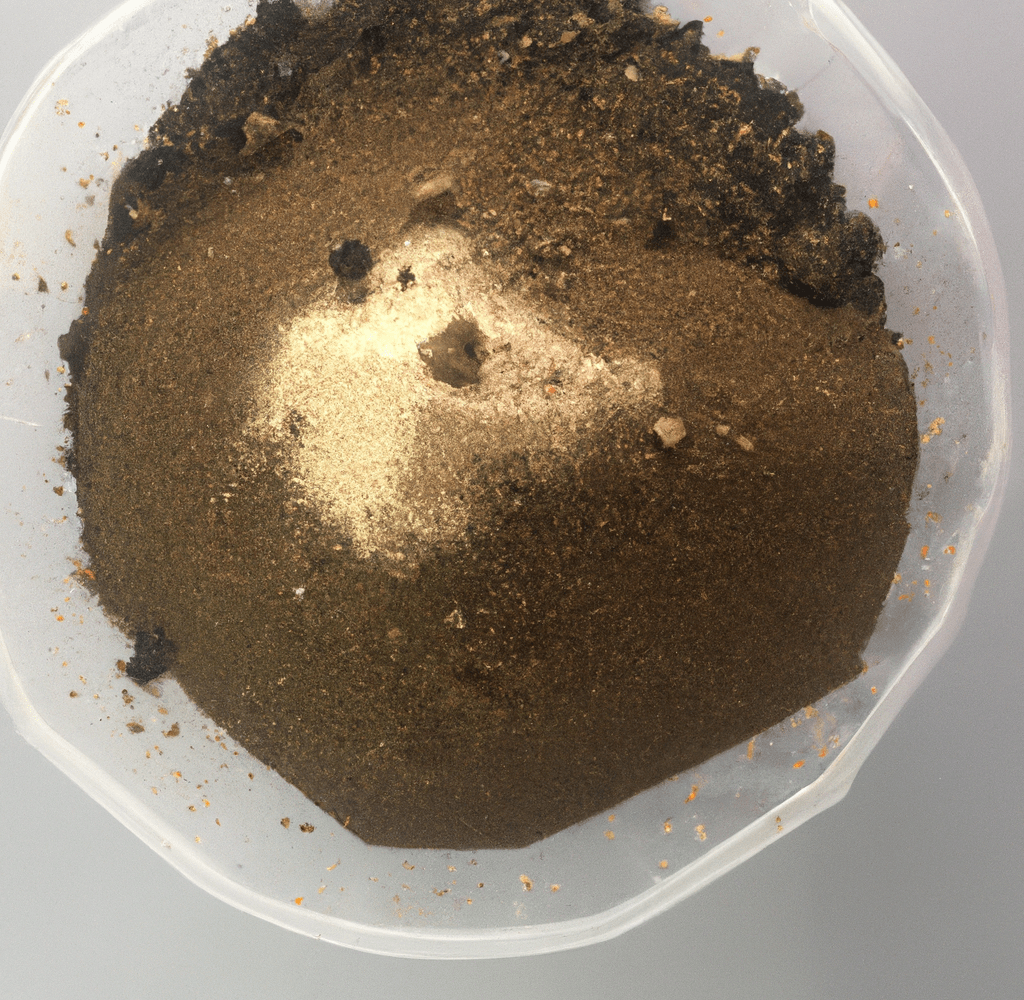
Adding Sulfur to Lower pH
Sulfur is commonly used as a soil amendment to lower soil pH and provide essential nutrients for crops when gardeners learn about the importance of soil pH in fertilization. Surface water and soil pH are closely related as the water can pick up excess nutrients, including sulfur, and carry them into nearby bodies of water. This can have significant impacts on aquatic ecosystems, leading to changes in water chemistry and potentially causing harm to aquatic plants and animals.
To ensure that the use of sulfur for soil pH management does not result in adverse effects on surface water, it’s important to consider the proper application methods and rates. Sulfur can be applied to soil as elemental sulfur, sulfate, or in the form of fertilizer blends containing sulfur. The specific method used will depend on the target pH level, the current soil pH, and the type of crop being grown.
By lowering soil pH, sulfur also helps to increase the availability of micronutrients, such as iron, that may otherwise be unavailable to plants in soils with high pH. The addition of sulfur to the soil to lower pH can provide many benefits for crop growth and nutrient management, but it is important to be mindful of the potential impacts on surface water. Proper application methods, rates, and monitoring are crucial to ensure that the use of sulfur results in positive outcomes for both crops and the environment.
Choosing the Right Fertilizer
Due to the fact that it supplies vital nutrients for growth and health, fertilization is a crucial component of plant care. Understanding the type of soil you are working with and the particular requirements of your plants is crucial for selecting the proper fertilizer after learning about the importance of soil pH in fertilization:
- Type of Soil: The sort of soil you have can affect the nutrients that are available to your plants. For instance, soil with a high percentage of clay may have trouble keeping nutrients, whereas soil with a high percentage of sand may quickly lose nutrients away from plant roots. You can choose the best fertilizer for your plants by knowing the characteristics of your soil.
- Calcium: Calcium is a crucial component for plant growth and is especially crucial for tomato and pepper blossom-end rot prevention and root formation. There are fertilizers available that contain calcium, and incorporating calcium into your soil will help guarantee that your plants have the nutrients they require.
- Aluminum: This naturally occurring element in soil has the potential to affect plant development. It’s crucial to keep an eye on the amount of aluminum in your soil and pick a fertilizer that won’t contribute to an excessive buildup of aluminum because high quantities of aluminum can be poisonous to plants.
- Fertilization: Plants should get a range of vital nutrients through a balanced fertilization process. Plants primarily require the macronutrients nitrogen (N), phosphorus (P), and potassium (K). The NPK ratio on fertilizer labels frequently serves as a representation of this. N, P, and K content in fertilizer should be about equal.
- Cations: Positively charged cations are present in soil and are crucial for plant development. Photosynthesis, water absorption, and overall plant health all depend on cations like magnesium, calcium, and potassium. The availability of these crucial cations for your plants will depend on the cation exchange capacity (CEC) of your soil, which you should take into account when selecting a fertilizer.
To choose the best fertilizer for your plants, it is essential to understand soil, calcium, aluminum, and fertilization. You may give your garden the greatest care possible by taking the time to comprehend the particular requirements of your soil and plants.
Bottom Line: The Importance of Soil pH in Fertilization
In order to determine the current pH of the soil and spot any potential nutrient deficits, routine soil testing is essential. This facilitates the creation of a fertilization strategy that is customized to the particular requirements of the soil and the crops. It’s crucial to learn about the importance of soil pH in fertilization and to comprehend the particular requirements of your soil type because different soil types have distinct pH requirements.
Managing fertilization properly is key for making sure that crops get the vital nutrients they require for optimum growth. Crops can benefit from receiving the nutrients they require for success with the help of a well-planned fertilization program that takes into account the unique requirements of the soil and the crop type.
FAQs on The Importance of Soil pH in Fertilization
Why is soil pH significant in fertilizing and what does it mean?
The soil’s acidity or alkalinity is determined by the pH of the soil. Because it impacts the availability of soil nutrients including nitrogen, phosphorous, and potassium, which are essential for crop growth and productivity, it is significant in fertilization.
What pH range works best for the majority of crops?
The optimal pH range for the majority of crops is between 6.0 and 7.0.
What happens if the pH of the soil is unbalanced?
The intake of nutrients and water can be restricted by too high or low soil pH, which can lead to stunted growth, yellowing leaves, and reduced yields.
What elements influence the pH of the soil?
Numerous organic and inorganic factors, such as fertilizer, plant nutrition, root systems, and soil management techniques like tillage, irrigation, and drainage, can have an impact on soil pH.
How can soil pH be changed for the best crop growth?
Sulfur can be used to reduce the pH of alkaline soil, and liming materials can be used to increase the pH of acidic soil.
How can soil pH be measured?
Utilizing instruments like a pH meter, litmus paper, pH test strips, etc., you may measure the pH of soil.
How frequently should soil pH be checked?
It’s crucial to regularly evaluate the pH of the soil and make any required adjustments to guarantee maximum crop development and nutrient uptake.
Who can you turn to for advice on managing soil pH?
To control soil pH, you can seek advice from a qualified agronomic or soil scientist.
How are soil pH and crop growth impacted by the pH scale?
The availability of essential nutrients for plant growth and development is impacted by the pH scale, which gauges how acidic or alkaline the soil is. A higher pH indicates a more alkaline soil, whereas a lower pH suggests a more acidic soil. The pH of the soil also affects the equilibrium of cations, which are necessary for plant growth and development.
Can pH in soil fluctuate over time?
In fact, a variety of factors, including fertilization, plant nutrition, plant root systems, and soil management techniques, can cause changes in soil pH over time. Soil samples should be periodically taken, and soil pH should be actively managed.
Why is managing disease and pests based on soil pH important?
The impact of pests and disease-causing bacteria on crops can be influenced by the pH of the soil. The spread of disease and pests can be slowed down by having the right soil pH.
What kind of plants prefer acid?
A: Acid-loving plants like soil with a pH between 4.5 and 6.5. Blueberries, azaleas, rhododendrons, and camellias are a few examples.
Why are plants neutral?
Vegetables, fruits, herbs, and flowers are examples of neutral plants, which are able to flourish in neutral soil with a pH of between 6.0 and 7.5.
What kind of plants prefers alkaline soil?
Lilacs, hydrangeas, and gardenias are examples of plants that like alkaline soil with a pH of 7.0 to 7.5. Potassium is essential for the growth and development of these plants.


